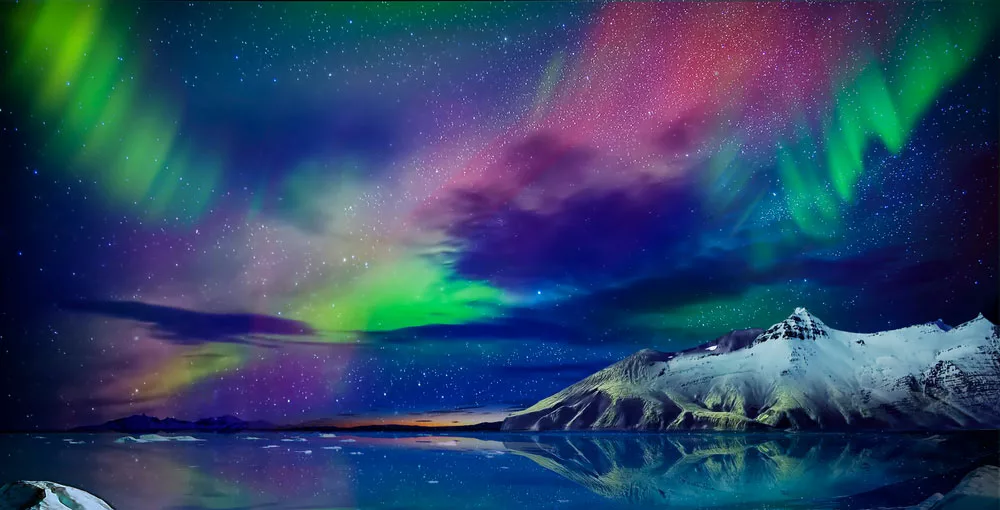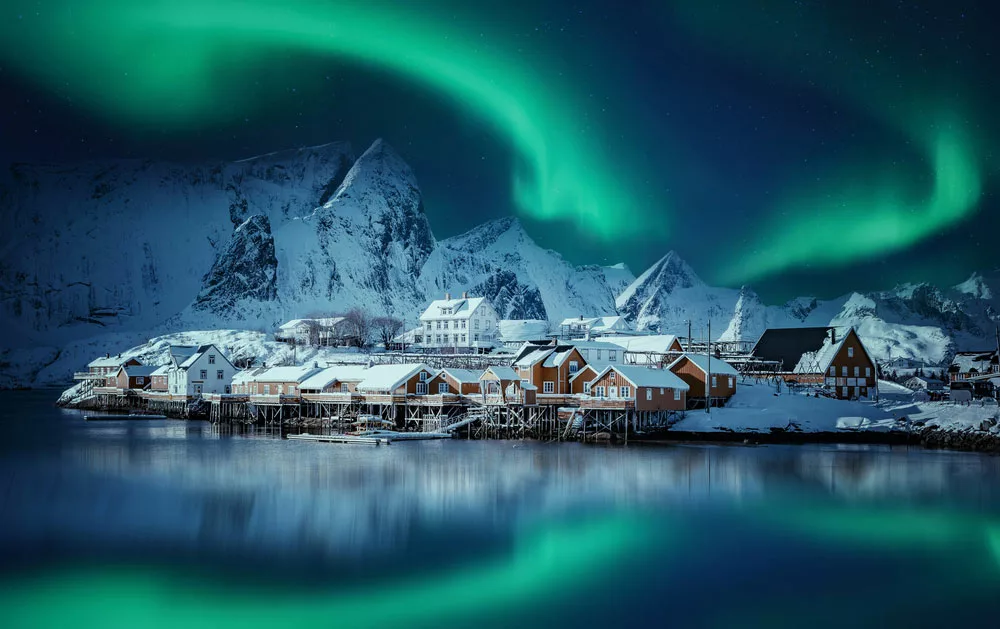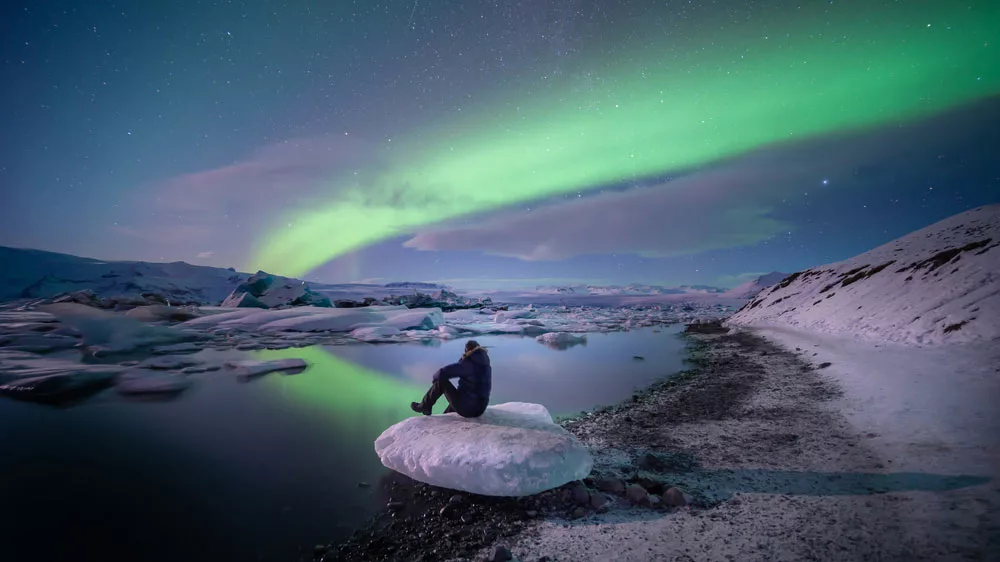Have you ever looked at the skylights to see a beautiful auroral display? Or you might see an aurora in photos and start wondering what it is and how to see these spectacular displays. This guide will tell you everything about them and how to see Northern Lights tonight!
What Are the Northern Nights?
The Northern Lights, also known as the Aurora Borealis, is an incredible phenomenon in high and low Northern latitudes.
This brilliant light show occurs when the sun sends a stream of charged particles into the atmosphere and interacts with atoms in Earth’s atmosphere to create dancing lights.
High up in the Earth’s atmosphere are particles of gas called atoms. These atoms are constantly colliding with each other.
When they collide, they release tiny packets of energy called photons. Usually, these photons escape into space, and we don’t see them. However, sometimes they can become trapped in the Earth’s magnetic field lines.
The Earth’s magnetic field funnels these photons down toward the North and South Poles, where they enter the atmosphere and become visible to us as the Aurora Borealis.
The specific color and form of light depend on the type of gas in the atmosphere and the altitude at which it collides.
For example, collisions between charged particles and oxygen atoms create green auroras, while collisions between charged particles and nitrogen atoms create red auroras.

Reflection of the northern lights in the water
Are Northern Lights Predictable?
Every 11 years, the sun goes through a period of increased activity. There are two sun’s 11-year cycle variations: a Solar Maximum, where the sun is most active and produces more solar flares, and a Solar Minimum, where the activity is lower.
You can see the Northern Lights more often and over wider areas during a solar maximum. However, the Northern Lights appear in certain locations even during a solar minimum.
The best time to see the Northern Lights throughout solar maximum is during the equinoxes in September and March.
Because the Earth’s tilt is at its highest during these times, there is strong activity and, thus, more chances of seeing the Northern Lights.
However, predicting the exact time and location of the Aurora Borealis is difficult, as many factors affect it, like weather permitting, solar activity, and the moon phase.
Nevertheless, there are some ways to increase your chances of seeing this natural phenomenon. If we are at solar maximum, the sky is clear, and there is high solar activity, chances are you will spot the Northern Lights.
You can also use an app like Aurora Alerts to understand when and where the Northern Lights might appear.

Winter scenery with aurora over Reine
How to Know That Northern Lights Will Occur?
KP Northern Lights Prediction
The KP Northern Lights forecast is the best Northern Lights prediction tool available. It works by measuring the magnetic strength of the Northern Lights and predicting when it is likely to occur in a given area.
A scale from 0 to 9 represents the forecast. A higher KP index will increase your chances of spotting the Northern Lights further south and seeing a strong display at higher latitudes.
For instance, a KP 3 will probably allow you to see the Aurora Borealis in Iceland, whereas a KP 5 or more increases the chances of seeing them in England.
- KP 1 to 3: Green is the most common color in the Northern Lights, particularly noticeable at high latitudes in the northern sky at night.
- KP 4 to 6: You can watch their motion and the vivid color combinations they have, including shades of yellow, blue, and purple. At this range, you can notice aurora coronas, and you may also notice aurora borealis and geomagnetic storms at lower latitudes.
- KP 7 to 9: The aurora can be extremely active, filling the entire sky of the United States and displaying more unusual hues like crimson. At lower southern latitudes, the Northern Lights, and aurora coronas are frequent during these extreme events.
Ovation Auroral Northern Lights Prediction
The Ovation prediction model depends on the high-resolution NOAA POES satellite data that predicts the coronal mass ejections.
It helps you determine if the Northern Lights and geomagnetic activity is likely in your area. The forecast covers several days in advance, giving you an idea of when the Aurora Borealis may be visible and how bright they might be.
The intensity of the Aurora fluctuates, ranging from gray, which means the Aurora isn’t likely to be visible, to green and red, which indicates that Auroral activity is more likely. Also, the stronger the auroral storm, the stronger auroras appear.
Solar Rotation
The sun creates a solar cycle (rotates on its axis) once every 27 days, determining how often and how strong the solar wind will be.
A stronger solar wind means more charged particles go toward the Earth, increasing the odds of seeing the Northern or Southern lights. By tracking the sun’s rotation, scientists can forecast when the Aurora Borealis is likely to appear.
Best Times to See
The Best Time of the Year
Northern Lights occur year-round, but the best time for viewing them is during the Northern Hemisphere’s winter months. At this time, the nights are longer, and there is less light pollution from the sun.
The Best Time of Day
You can see these Lights anytime at midnight, but they are usually more active during the daylight hours.
The best time to look for solar storms is at hours around midnight. These nightside hours are between 10 PM and 2 AM, far away from city lights or artificial lights.
However, this isn’t set in stone. Alaska Fairbanks’ Geophysical Institute says that Aurora Borealis can appear at any hour of the night as long as the sky is dark and clear and there is solar activity.
Best Place to Observe
The Aurora is most visible in an oval-shaped region centered around the north and south latitudes of 60 to 75 degrees. Here are some of the best locations:
- Southern Iceland, Iceland Northern Lights
- Whitehorse, Canada’s Northwest Territories
- Tromso, Norway
- Fairbanks, Alaska Northern Lights
- Rovaniemi, Finland
- Kiruna, Sweden
- Murmansk, Russia
- Ilulissat, Greenland
- Dunedin, New Zealand
- Tasmania, Australia

Alone with the Aurora at Glacier Lagoon in Iceland
Summary
In general, there are people around the world who can see the Northern Lights if they know where to go, when, and what conditions are necessary. We hope you get the unique opportunity to witness this lifetime experience one day.
If you have any questions, please don’t hesitate to comment!
